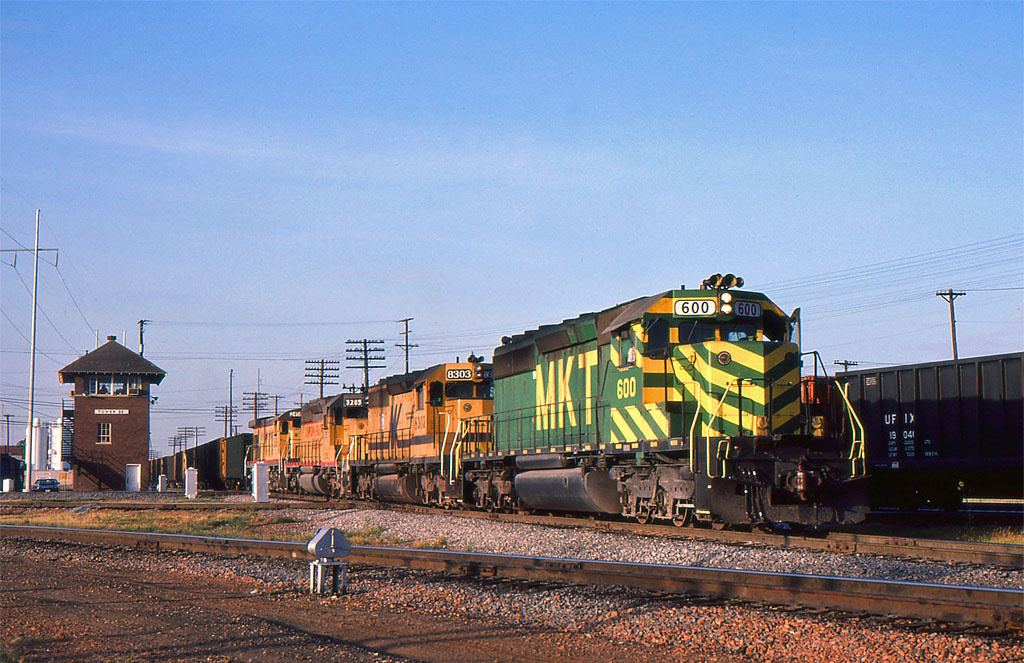Photo Exhibits |
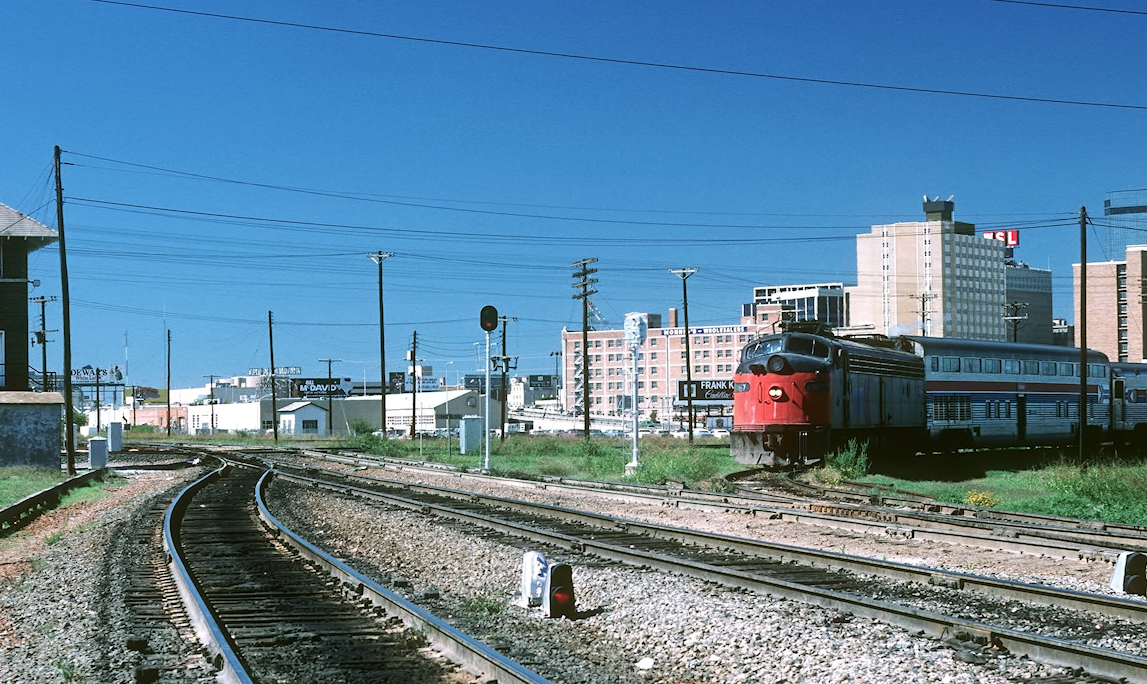
An ex-Santa Fe Hi-Level Coach and sleeper make-up the consist of the Dallas section of
Amtrak'sLone Star. It has just left the old Santa Fe station in Fort Worth and has turned
at Tower 55. The train will use Missouri Pacific trackage for the remainder of the journey
on an October afternoon in 1976.
(Gary Morris photo and caption info) |
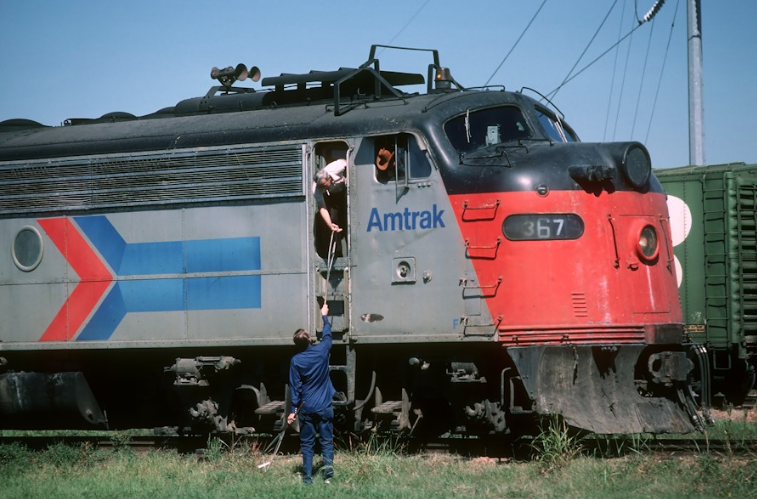
Amtrak E8A #367 slows to a crawl so the Tower 55 operator can deliver train orders the old
fashion way, with a long wooden hoop. The single E-unit is in-charge of the Dallas section
of the "Lone Star," which on 10 October 1976 consisted only of a high-level coach and an
ex-Sante Fe sleeper. (Gary Morris photo) |

Santa Fe F7A #327L leads a classic A-B-B-B-A locomotive consist on a late afternoon in May
1970. The five war bonnet-attired EMDs are surplus passenger power and no longer needed to
haul the railroads decreasing number of long-distance trains. For the remainder of their
time on "Uncle John's" railroad, the once pristine-looking F-units will be delegated to
hauling freight. (K.B. King photo, Jim Spears collection) |
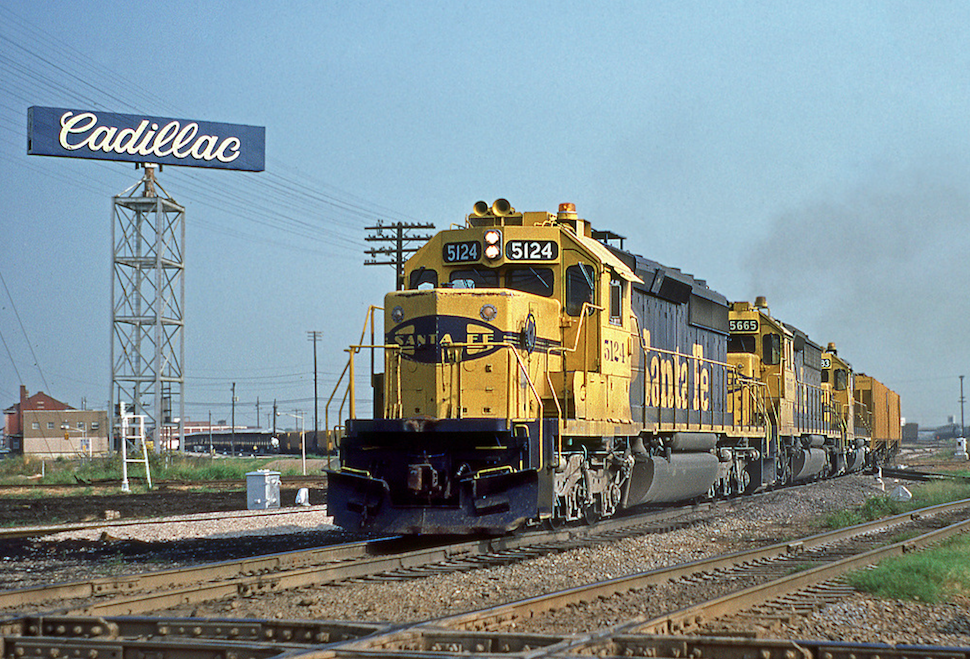
If this was a "where is it", every photographer in the southwest during the 70s and 80s
would get this right away. The Frank Kent Cadillac sign was just as much a landmark in
downtown Fort Worth as Tower 55. For some, the challenge was getting the sign composed with
the train. Ironic that the Cadillac sign might even be syptomatic of the then-prevailing
sentiment of the SD40-2. (Barry Byington photo and caption) |
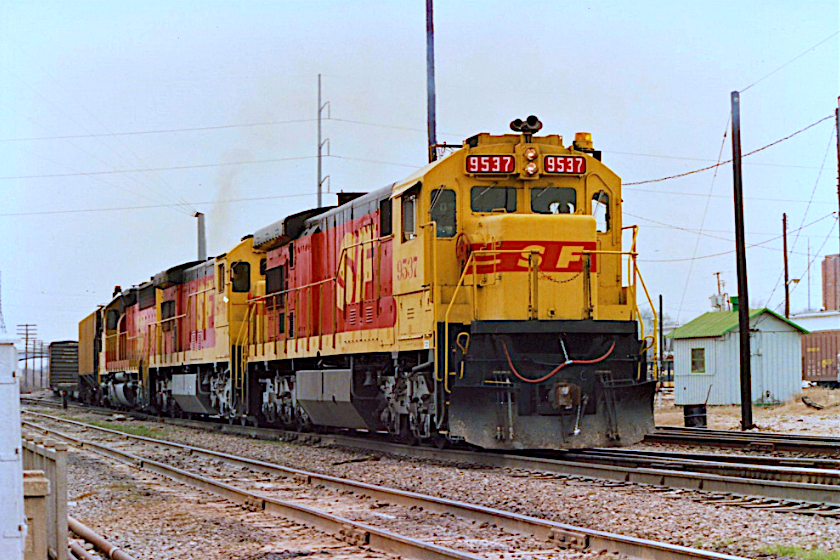
Santa Fe's Cleburne, Texas shops remanufactured seventy U36Cs into 3000-hp "SF30Cs" during
1985-1987. The six-axle freight haulers received a new Dash-7 electrical system, Sentry
Wheel-Slip management system, as well as a coat of the company new Kodachrome paint scheme.
SF30C #9537 leads northbound freight tonnage past Tower 55 late in the 1980s. (Joel Gilmore photo)
|
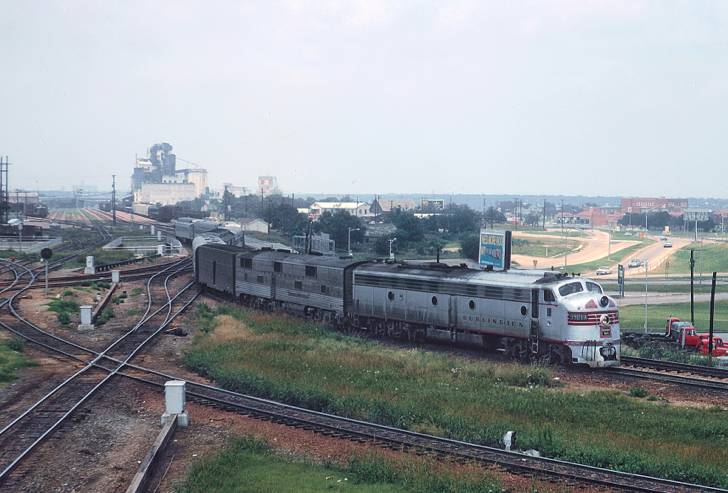
Fort Worth & Denver (Burlington Lines) Train #2, the Texas Zephyr, has just begun the long
northbound run (800 miles) to Denver. The seven-car passenger consist was being led on 20
May 1967 by two of the railroad's stalwarts, E7A 9981A and a some-what rare E5B. (Tom
Hoffman photo, Marty Bernard collection) |
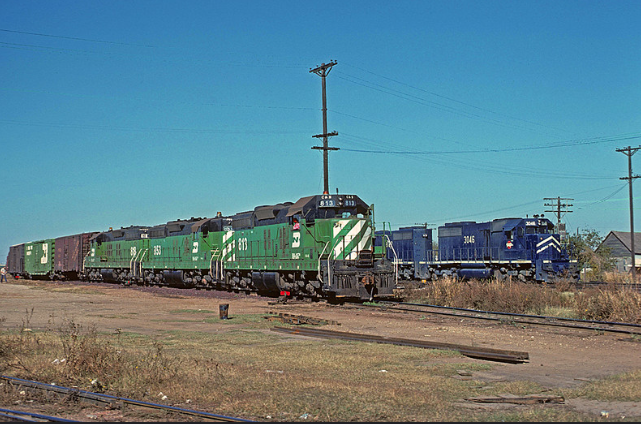
Burlington Northern's Colorado & Southern subsidiary SD7 #813 and 818 bracket Fort Worth &
Denver SD7 #853 as they work FW&D's Downtown Yard in Fort Worth just north of Tower 55.
Missouri Pacific SD40 #3046 South in the background gets a roll-by on 7 November 1975.
(Glenn Anderson photo)
| 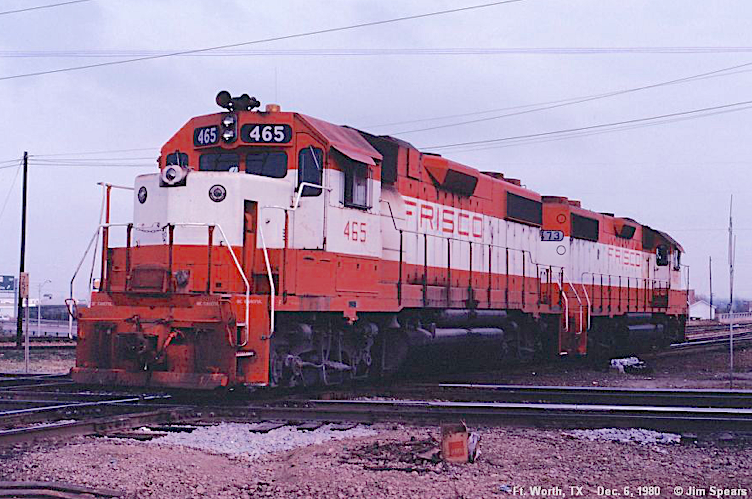
A light engine move in the form of Frisco-painted GP38-2s #464 and 473 bang across the
diamonds at Tower 55 on 10 December 1980. The two 2000-hp EMDs are actually the property
of Burlington Northern as a result of a BN + SLSF merger three weeks prior. (Jim Spears photo)
|
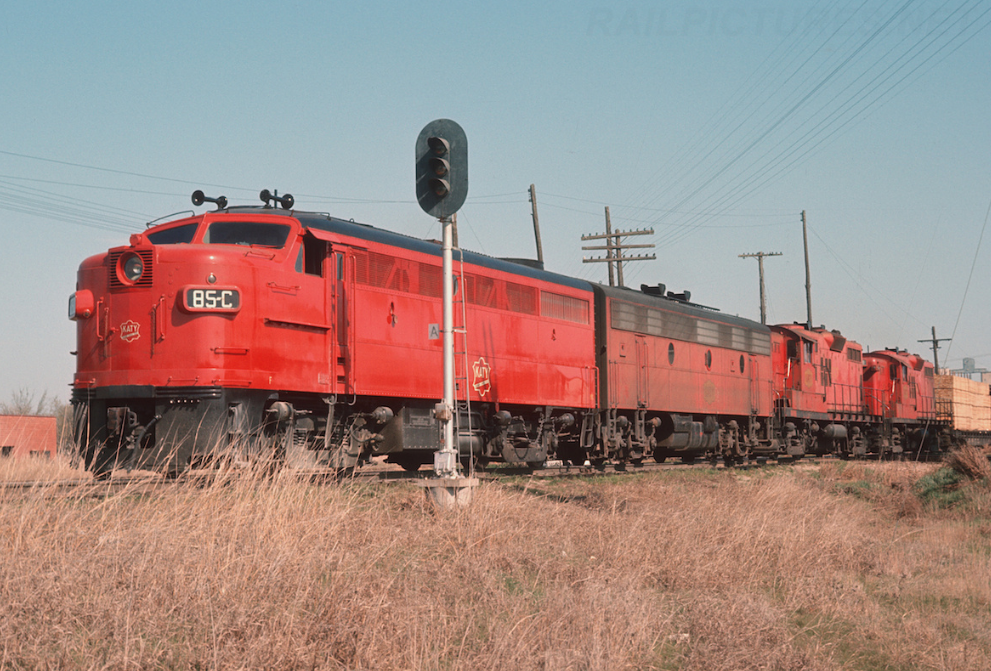
Don't let the Alco carbodies fool you; there are six thousand-EMD horses on the point of
this southbound general freight. In just a few short moments, the Katy manifest passes
Tower 55 and stops at Ney Yard, the final destination. The Alco cab unit and two RS3s were
rebuilt by EMD 12 years prior to this March 1968 image. (David Hawkins photo) |
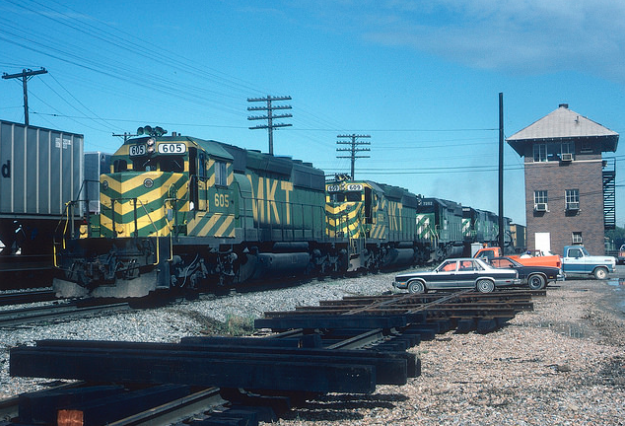
MKT SD40 #605 and a sister six-axle unit lead a southbound BN coal train past Tower 55 on 17
April 1987. Coal traffic through Fort Worth grew significantly with the opening of the
Powder River Basin in the 1970s. Pooled and run-through power on area railroads became the
norm as a result. (Francis J. Weiner photo David Hawkins collection) |
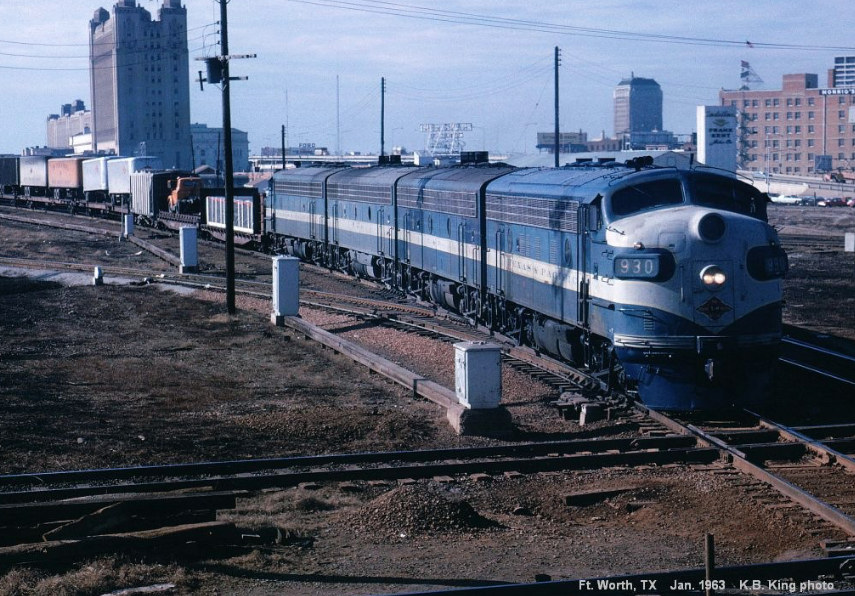
A classic A-B-B-A set of F7s bangs across the diamonds at Tower 55 on 3 January 1963. Prior
to its 1976 merger with Missouri Pacific, the predominantly east-west railroad provided
passenger and freight serice between Texas and Arkansas. Note the early piggyback loads.
(K.B. King photo, Jim Spears collection) |
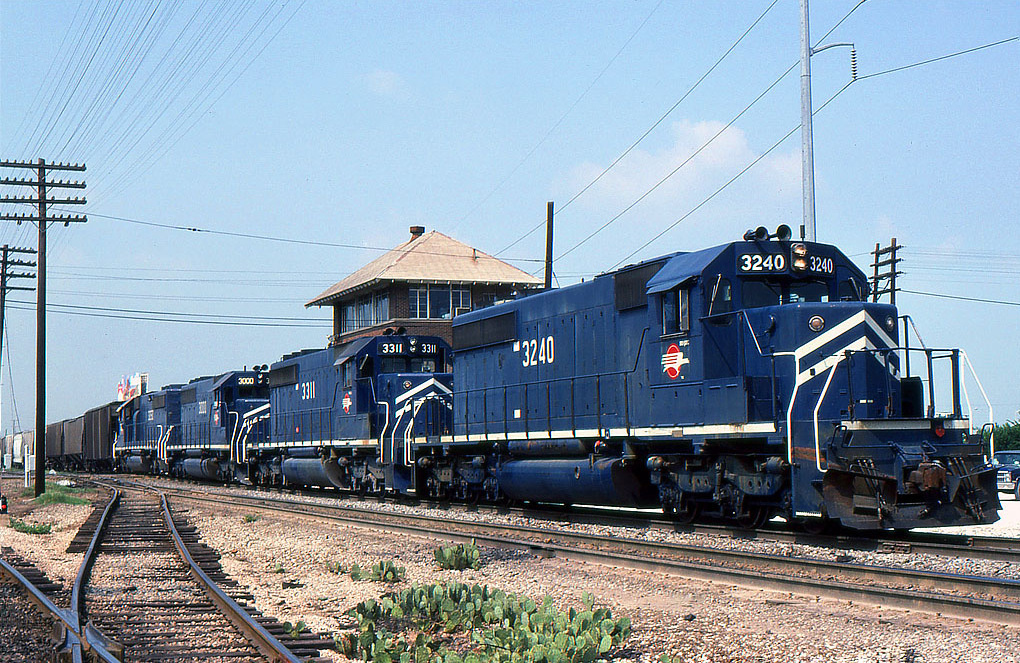
A brace of Missouri Pacific 3000-horsepower SDs roll a northbound freight across the diamonds
at Tower 55 in July 1983. The crew of lead engine SD40-2 #3240, while mindful of getting
their train safely across the system, are also probably wondering about the long-term
implications of the six-month-old UP + MP merger. (John Shine photo) |
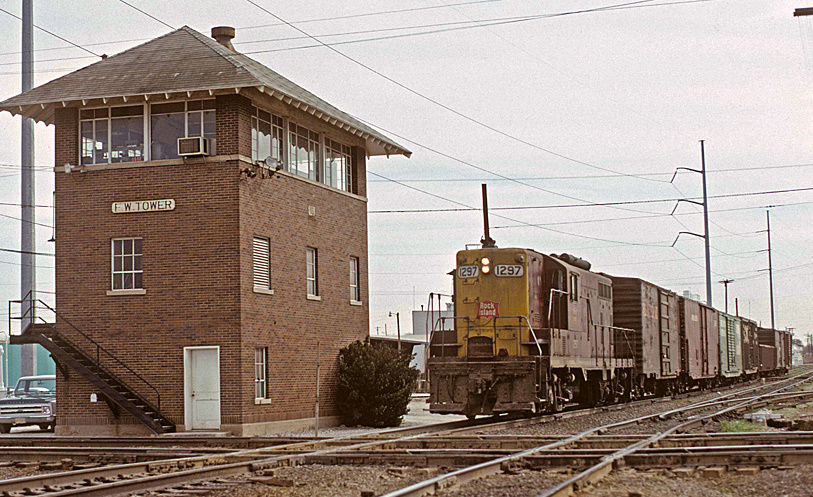
Chicago Rock Island & Pacific GP7 #1297 draws a seven-car transfer run passed three-story
Tower 55 on 26 February 1975. The wooden "F.W. Tower" sign affixed to the 34-year-old
structure was replaced sometime during the mid to late 1980s. (Glenn Anderson photo)
| 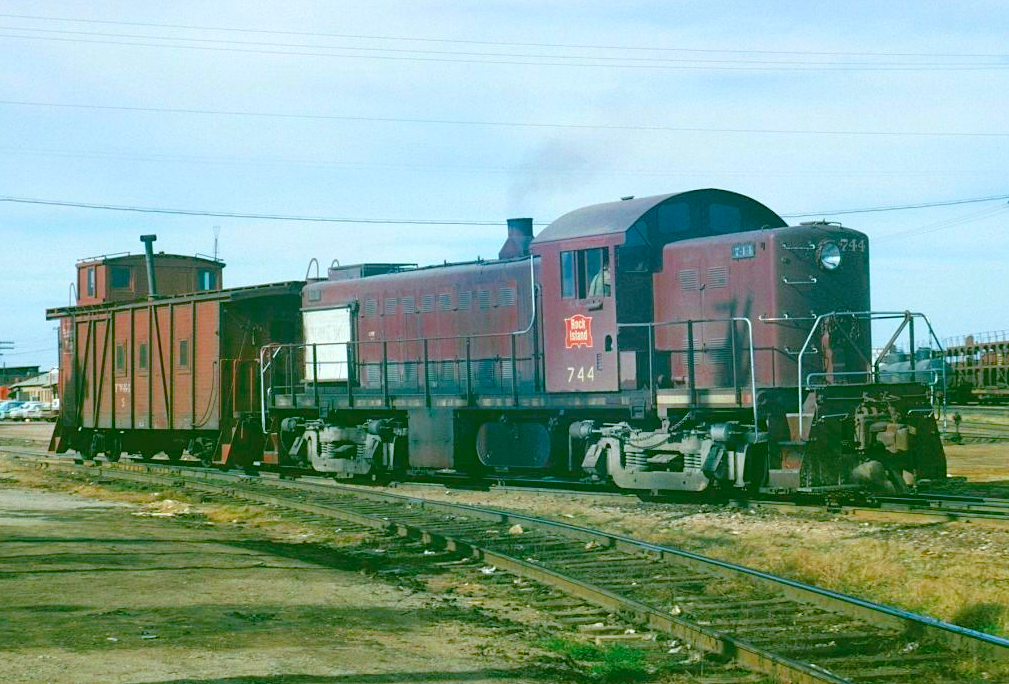
Rock Island had only a minor presence in Fort Worth; its facilities were located close to
Tower 55 at Peach Yard. CRI&P RS1 #744 works a caboose hop in February 1966; the outside-braced
crummy adds character to the vintage scene. (K.B. King photo, Jim Spears collection) |
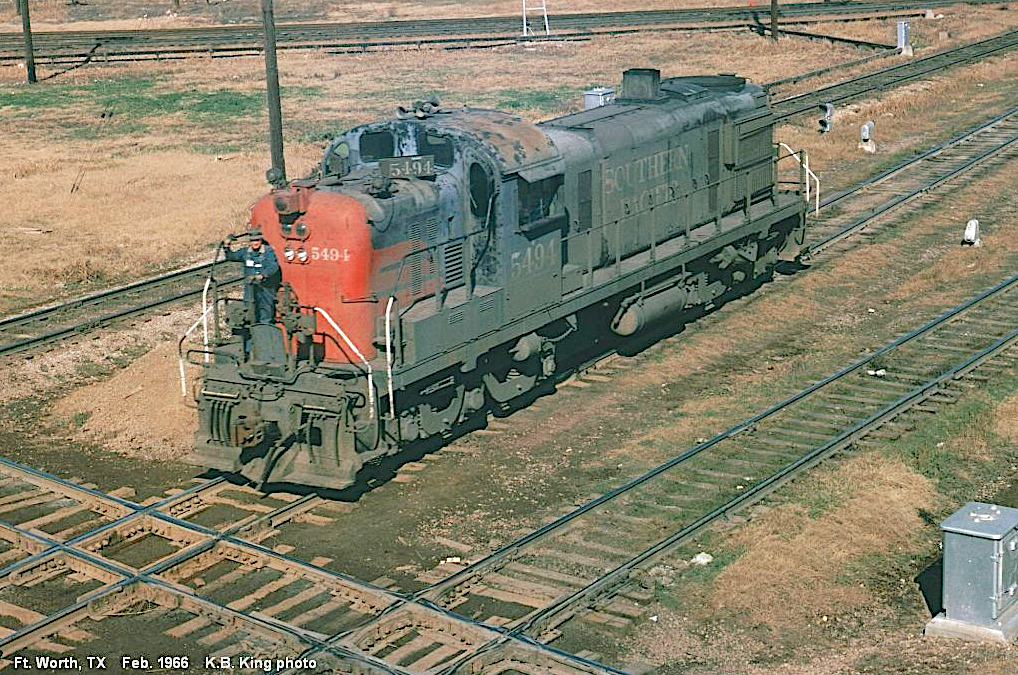
Southern Pacific RSD5 #5494 was one of the last locomotives built by Alco employing the
244-engine (November 1955). Additionally, it had been set-up at the Schenectady plant to
run short-end first. RSD5s were transferred to Texas because of an inability to handle
the rigors of Tehachapi and Beaumont in California. (K.B. King photo in February 1966, Jim
Spears collection) |
 |
|
